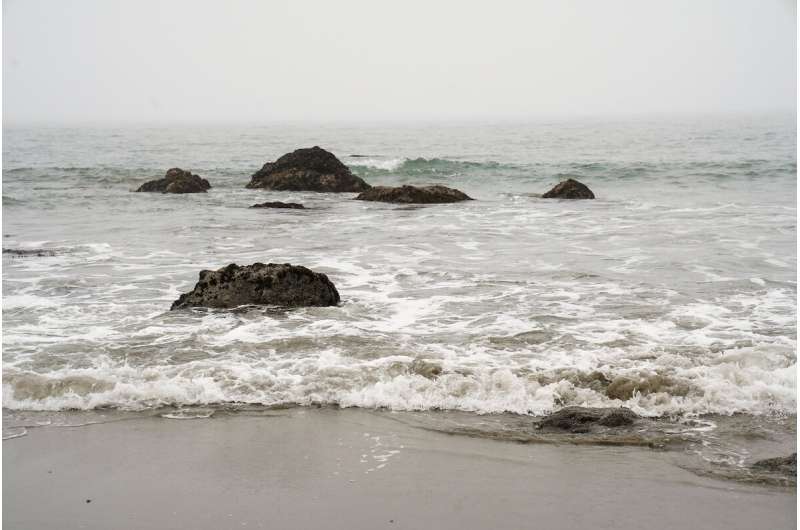People often say that Phoenix has always been dry; Seattle has always been wet; and San Francisco has always been foggy. But “always” is a strong word.
A study from the University of California, Davis, synthesizes climate trends across the Western U.S. during a relatively recent period of Earth’s history—the Holocene Era, which stretches from the present day to the past 11,000 years. This look at the really Old West shows that the hallmarks of California’s climate—the foggy coastlines that gave rise to towering redwoods, the ocean upwelling that spawned productive fisheries, the warm summers and mild winters—began around 4,000 years ago.
It also reveals a time when the Pacific Northwest was warm and dry and the Southwest was warm and wet.
An understudied era: The current one
Published in Climate of the Past, the study provides a baseline against which modern climate change in the region can be considered. It also sheds light on a lesser-studied geological epoch—the current one, the Holocene.
“We kept looking for this paper, and it didn’t exist,” said lead author Hannah Palmer, who recently earned her Ph.D. from the UC Davis Department of Earth and Planetary Sciences. “There are many records of past climate for a single location, but no one had put it all together to understand the big picture. So we decided to write it.”
The authors analyzed more than 40 published studies, examining the interplay among land and sea temperature, hydroclimate and fire activity across three distinct phases.

The quintessential California fog of Northern California has “only” defined its coastline for about 4,000 years, a UC Davis study found. This shot was taken off the coast of Bodega Bay, Calif. © Karin Higgins/UC Davis
The study found:
Compared to pre-Holocene conditions (the last Glacial period), the Early Holocene (11,700-8,200 years ago) was a time of warm seas, a warm and dry Pacific Northwest, a warm and wet Southwest and fairly low fire activity.By the Middle Holocene (8,200-4,200 years ago), that pattern had reversed: The ocean’s surface cooled, the Pacific Northwest became cool and wet, and the Southwest became drier. The Late Holocene (4,200 years ago-present) is the most climatically variable period. It marks the period when the “modern” climate and temperature patterns were established. The study noted a defined interval of fire activity over the past two centuries that is linked to human activity.
Unprecedented interval
The study also considered the impact of humans on environmental changes at the time, noting that the Era of Colonization (1850-present) represents an unprecedented environmental interval in the climate records.
“Humans have been living here throughout the entire Holocene,” Palmer said. “The climate impacted them, and they impacted the climate, especially in recent centuries. This paper shows how that push and pull has changed over the past 11,000 years.”
Different responses
“Sometimes people point to recent rain or cold snaps as evidence against climate change,” said co-author Veronica Padilla Vriesman, a recent Ph.D. graduate from UC Davis Department of Earth and Planetary Sciences. “This study illustrates how different regions respond differently to global climate changes. That long-term perspective helps us understand the historical climate of the western U.S. and how it may respond moving forward.”
The study stemmed from a graduate seminar about the Holocene period led by Tessa Hill, a professor in the Department of Earth and Planetary Sciences and associate vice provost of Public Scholarship and Engagement. Additional co-authors include Caitlin Livsey and Carina Fish. All authors were part of Hill’s Ocean Climate Lab at the UC Davis Bodega Marine Laboratory in the Department of Earth and Planetary Sciences.
“Climate records from the Holocene provide a valuable window into the context of human-caused climate change,” said Hill. “They provide an opportunity for us to understand places that may be more or less resilient to change in the future.”
More information:
Hannah M. Palmer et al, Holocene climate and oceanography of the coastal Western United States and California Current System, Climate of the Past (2023). DOI: 10.5194/cp-19-199-2023
Citation:
Study reveals shifting climate trends in the Western US dating back 11,000 years (2023, February 27)
